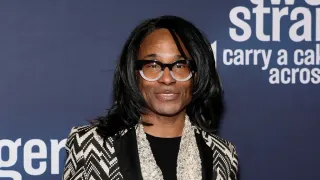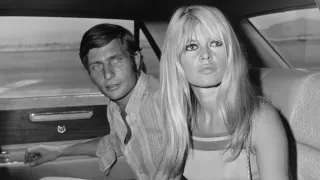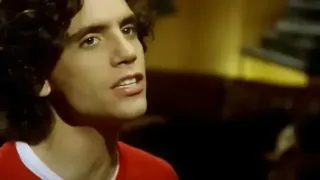March 30, 2019
'Underwater' Homeowners Group Promotes Climate Change action
Jennifer Kay READ TIME: 4 MIN.
The "Underwater Homeowners Association" sounds like a sad joke about the future of real estate in flood-prone Miami.
It's actually an earnest, block-by-block effort to turn neighbors into climate-change advocates.
Starting in his affluent suburb of Pinecrest, artist Xavier Cortada hopes his concept will spread, helping people nationwide understand that melting polar ice is no abstract threat.
Cortada repurposes "for sale" signs, painting partially-submerged numbers that announce exactly how many feet above sea level each property is, for people to plant in their front yards. A growing number of members have signed on at underwaterhoa.org since Cortada launched the idea in December.
Cortada's signs show his home is on relatively high ground: 6 feet (2 meters) above sea level. His studio is at 8 feet (2.5 meters).
Rising seas will spare no one concerned about quality of life in Pinecrest, a village of 19,000 not far from Biscayne Bay. Like the rest of South Florida, it's trapped between the ocean and the swampy Everglades, which act as a western coastline. Water also rises through Florida's porous bedrock, making seawalls and levees less effective.
"If your neighbor sees a number 6 in front of your house, your neighbor knows that you, too, are a number 6," Cortada said. "So you are no longer a Democrat or a Republican, or an anti-science or pro-science person. You're both literally standing at the same elevation."
Cortada's signs feature his swirling paintings of melting Antarctic glaciers. Other neighbors have made their own. Students also painted the elevations of four intersections – 6, 7, 9, 11 feet (2, 2.1, 2.75, 3 meters) – along the city's two-lane main road, which Cortada dubs "Elevation Drive." It runs along what constitutes high ground in South Florida – a narrow coral ridge that appears to stay dry when models of sea level rise show much of the region inundated.
Some residents aren't happy about these art installations, warning on a community newspaper's website that the painted signs and pavement could devastate property values.
"Does anyone seriously want this in front of the expensive homes in Pinecrest? Maybe they won't be so expensive once they convince the world they will be underwater in a few years," one wrote.
Whether people like their neighbors' politics, global warming is already affecting homebuyers here, where average seas could rise 6 to 10 inches (15 to 25 centimeters) by 2030, and 14 to 26 inches (35 to 66 centimeters) by 2060, compared with 1992 levels, according to the most recent data from the Southeast Florida Regional Climate Change Compact.
Other projections show saltwater rising another foot (30 centimeters) by the time a new 30-year-mortgage is paid off, and 2 feet (60 centimeters) by the time today's schoolchildren retire. Long before then, intruding seawater could wash away infrastructure, submerge public spaces and make even a trip to the grocery store difficult to navigate.
Cortada worked with Florida International University to create Eyes on the Rise , a website that shows the elevation of any address. Then he partnered with the Florida Conservation Voters Education Fund to help people understand how they might get involved.
Renters as well as homeowners are welcome in the Underwater HOA. There are no dues or other requirements. The main idea is to encourage neighbors to discuss climate change among themselves. What happens next is up to each group. Actions could include creating plans for individual households, doing climate education outreach, attending government meetings or lobbying elected officials.
That kind of hyperlocal advocacy is already having an effect: Miami Mayor Francis Suarez applauded neighborhood groups last month while showing off the city's response to rising sea levels to former United Nations Secretary General Ban Ki-moon. Suarez said local activism was key to persuading voters to approve a $400 million bond initiative to strengthen Miami's infrastructure against climate-change effects. They've also persuaded the city to study what they call climate gentrification: As property values rise along higher elevations, low-income people who remain above water fear they'll be priced out of their homes by wealthier people fleeing once-desirable coastal neighborhoods.
Cortada's inaugural Pinecrest group has met twice so far, led by Brian Haus, an ocean-sciences expert at the University of Miami. Their February meeting stuck to local water issues: the number of city residents still using well water, the lack of fire hydrants in some areas, whether sewer lines could extend to residents using septic tanks.
Saltwater intrusion already threatens that infrastructure, but the dozen or so residents had broader worries, too.
They don't want to leave Miami – hurricanes are easier to endure than wildfires or ice storms, they said – but some caution against sinking too much time, energy and money into shoring up what could become a waterlogged burden. "Sell the house when I'm gone and get out," some said they told their children.
Holly Zickler is enthusiastic: She hosted a picnic in a park in neighboring South Miami, encouraging neighbors to paint their own signs and launch their own chapter.
"I like that the Underwater HOA is flipping the script on what a traditional HOA actually stands for, which is mostly people standing around with pitchforks at the ready," said Zickler, who lives at 9 feet (2.75 meters).
"I would love to see this go all the way up the East Coast, to go nationally," she said. "We all need to lurch forward with this, and lurch forward thinking consciously about this."
As Zickler's neighbors checked their addresses in the Eyes on the Rise app, reactions ranged from mock panic to envy.
"Look at that show-off at 12.8 (4 meters)! You're kind of like gloating there," joked Mari Chael, an architect who lives at 6.5 feet (2 meters). "I think I want to buy your house!"
Chael says this is one fight no property owner can escape.
"We're all South Floridians," Chael said. "We live in the same kind of spongy lime rock that sort of unites us all in our misery."






